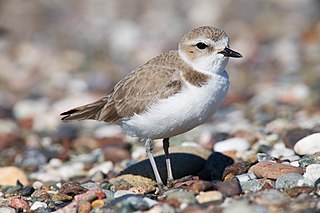
The snowy plover is a small wader in the plover bird family, typically about 5-7" in length. It breeds in Ecuador, Peru, Chile, the southern and western United States and the Caribbean. Long considered to be a subspecies of the Kentish plover, it is now known to be a distinct species.
The Canadian Wildlife Service or CWS, is a Branch of the Department of the Environment, also known as Environment and Climate Change Canada, a department of the Government of Canada. November 1, 2012 marked the 65th anniversary of the founding of Service.

Ludlow Griscom was an American ornithologist known as a pioneer in field ornithology. His emphasis on the identification of free-flying birds by field marks became widely adopted by professionals and amateurs. Many called him "Dean of the Birdwatchers."

The National Wildlife Refuge System in the United States has a long and distinguished history.

The Massachusetts Audubon Society, founded in 1896 by Harriet Hemenway and Minna B. Hall, headquartered in Lincoln, Massachusetts, is a nonprofit organization dedicated to "protecting the nature of Massachusetts". Mass Audubon is independent of the National Audubon Society (NAS), just as in the neighboring state of Connecticut, where Connecticut Audubon Society is independent of the NAS. Both Mass Audubon and Connecticut Audubon Society were founded earlier than the NAS. Mass Audubon protects 36,500 acres of land throughout Massachusetts, saving birds and other wildlife, and making nature accessible to all with its wildlife sanctuaries and 20 nature centers.
The New Jersey Audubon is an environmental education and conservation advocacy organization. Founded in 1897, it is one of New Jersey's largest environmental organizations, with 10 staffed nature centers, 34 nature preserves, and thousands of members throughout New Jersey and the world. It is an independent organization and is not affiliated with the National Audubon Society.

The Connecticut Audubon Society Birdcraft Museum and Sanctuary, also known as Birdcraft Museum & Sanctuary or simply Birdcraft Sanctuary, in Fairfield, Connecticut is the oldest private songbird sanctuary in the United States. It was established in 1914 by Mabel Osgood Wright.
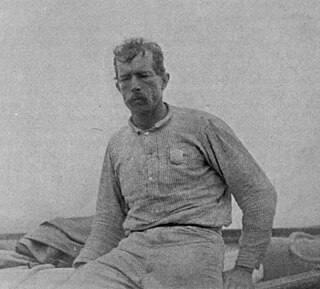
Guy Morrell Bradley was an American game warden and deputy sheriff for Monroe County, Florida. Born in Chicago, Illinois, he relocated to Florida with his family when he was young. As a boy, he often served as guide to visiting fishermen and plume hunters, although he later denounced poaching after legislation was passed to protect the dwindling number of birds. In 1902, Bradley was hired by the American Ornithologists' Union, at the request of the Florida Audubon Society, to become one of the country's first game wardens.
Seattle Audubon Society is a non-profit environmental organization dedicated to protecting birds and the natural environment by involving volunteers and the community in education, advocacy, preservation, science and enjoyment. Founded in 1916 to observe and protect birds, it is a chapter organization of the National Audubon Society, and is one of the oldest natural history organizations in the Pacific Northwest.
The Audubon movement is a collective name for the more than 500 Audubon clubs, societies, and organizations in North America, all of which take their name from the famous bird artist John James Audubon.

Forest and Stream was a magazine featuring hunting, fishing, and other outdoor activities in the United States. The journal was founded in August 1873 by Charles Hallock. At the time of its 1930 cancellation it was the ninth oldest magazine still being issued in the US.

The Audubon Society of Portland is a non-profit environmental organization dedicated to wildlife conservancy in Portland, Oregon, United States.
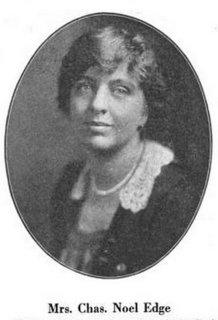
Rosalie Barrow Edge was an environmental advocate, New York socialite, suffragist, and amateur birdwatcher who in 1929 established the Emergency Conservation Committee to expose the conservation establishment's ineffectiveness, and strongly advocate for species preservation. In 1934 Edge also founded the world's first preserve for birds of prey — Hawk Mountain Sanctuary near Kempton, Pennsylvania. During the Great Depression, Edge was considered the United States' most militant conservationist. In 1948, a profile of her in The New Yorker described her as "the only honest, unselfish, indomitable hellcat in the history of conservation".

The Connecticut Audubon Society, founded in 1898 and headquartered in Fairfield, Connecticut, is a nonprofit organization dedicated to "conserving Connecticut’s environment through science-based education and advocacy focused on the state’s bird populations and habitats." Connecticut Audubon Society is independent of the National Audubon Society (NAS), just as in the neighboring state of Massachusetts, where Massachusetts Audubon Society is independent of the NAS.
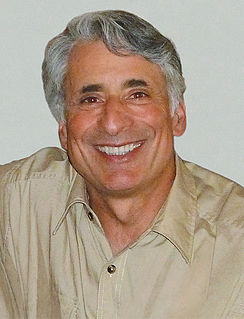
David Yarnold is the president and CEO of the National Audubon Society. He became the conservation organization's 10th president in September, 2010.

Chandler Seymour Robbins was an American ornithologist. His contributions to the field include co-authorship of an influential field guide to birds, as well as organizing the North American Breeding Bird Survey.

Plume hunting is the hunting of wild birds to harvest their feathers, especially the more decorative plumes which were sold for use as ornamentation, such as aigrettes in millinery. The movement against the plume trade in the United Kingdom was led by Etta Lemon and other women and led to the establishment of the Royal Society for the Protection of Birds. The plume trade was at its height in the late 19th and was brought to an end in the early 20th century.
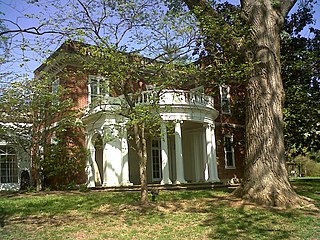
The Audubon Naturalist Society of the Central Atlantic States (ANS) is an American non-profit environmental organization dedicated to conservation and education. Until 1959, the organization was known as the Audubon Society of the District of Columbia. The organization holds three properties in the Washington, D.C. metropolitan area as wildlife sanctuaries, two in Virginia along with its headquarters in Maryland.

Constitution Marsh is a 270-acre (110 ha) fresh water and brackish tidal marsh located between Constitution Island and the eastern shores of the Hudson River in Garrison, New York. Together with 80 acres (32 ha) of bordering woodlands, it forms the National Audubon Society's Constitution Marsh Audubon Center and Wildlife Sanctuary. Part of Hudson Highlands State Park, it is one of five major tidal marshes along the Hudson River. Constitution Marsh is an Audubon Important Bird Area, and has been listed as a New York State Bird Conservation Area since the early 2000s. It is also recognized by the New York State Department of State as both a Significant Coastal Fish and Wildlife Habitat and a Scenic Area of Statewide Significance.
Joseph Drew Lanham is an American author, poet and wildlife biologist. Raised in Edgefield, South Carolina, Lanham studied zoology and ecology at Clemson University, where he earned a PhD in 1997 and where he currently holds an endowed chair as an Alumni Distinguished Professor. He is a board member of several conservation organizations, including the South Carolina Wildlife Federation, Audubon South Carolina, the Aldo Leopold Foundation, BirdNote, and the American Birding Association, and an advisory board member for the North American Association of Environmental Education. In 2019 he was awarded the National Audubon Society's Dan W. Lufkin Prize for Environmental Leadership, recognizing "individuals who have dedicated their entire lives to the environment".




















